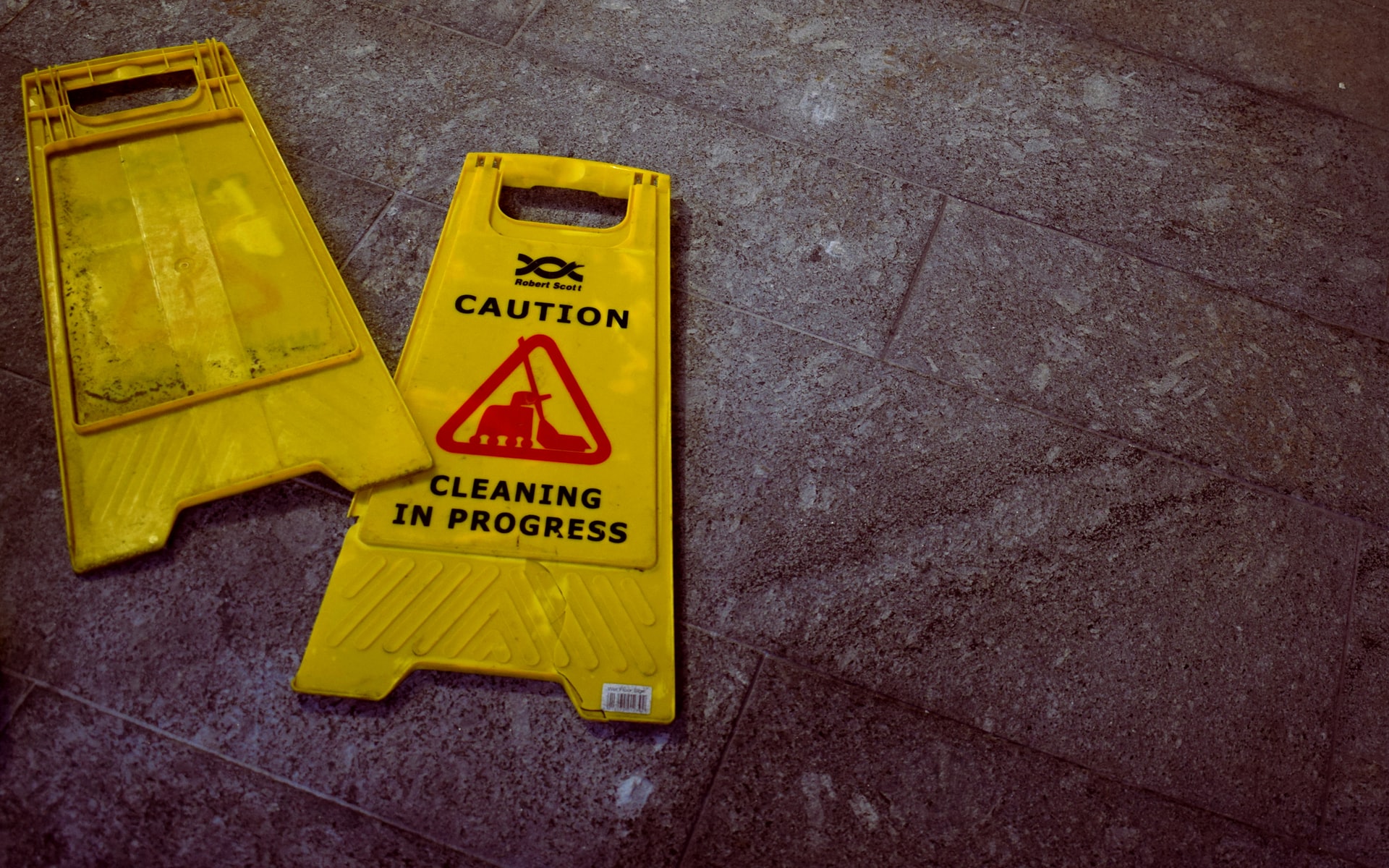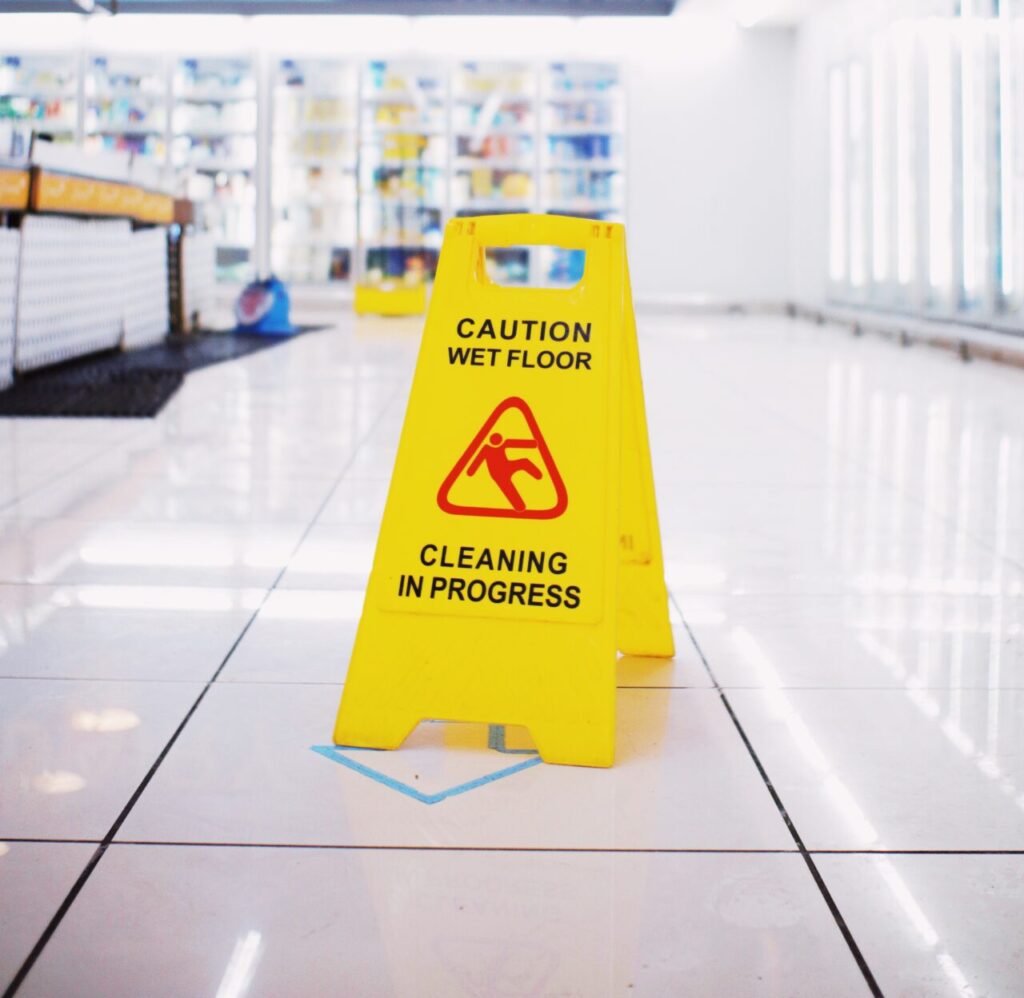In this post parts (1&2), we will focus on specialty cleansers that can be used in a variety of industrial and institutional applications. From food, pharmaceutical, and cosmetic industry plant cleaning via big kitchens, hotels, hospitals, and public buildings, many needs, e.g., for floor care or vertical surface cleaning, are going in the same directions.
Gel Cleansing Products
The cleaning of production areas in the food, pharmaceuticals, and cosmetics industry with gel cleansers plays an ever-increasing role. As cleansers should also be as easy to handle as possible, the aim is to formulate systems that are of very low viscosity, but that undergo a considerable viscosity increase upon dilution with water to a use concentration of 5 to 10%. This dilution adheres to a surface in a gel-like manner so that soil is effectively attacked. Such low-viscosity concentrates can be easily sucked up with common foam lances and then injection-sprayed after mixing with water.
Thickening effects in cleansers may also be achieved with polymeric thickeners or with surfactant blends of different kinds. The use of polymeric thickeners (e.g., on the basis of cellulose), however, is problematic as industrial cleansers are often highly acidic or alkaline. In practical application preference is therefore given to thickening effects caused by the interaction of surfactants. A new approach concerning the preparation of gel-forming cleansers focuses on the use of an emulsifier with solubilizing properties similar to those of alcohol, which controls the viscosity and in addition improves the dirt removal capacity of the cleanser from the boundary between molecular solutions and(macro)emulsions.
In practical applications the cleanser concentrate can be applied with the usual foam lance dosing systems or with high-pressure cleaning systems. As it does not contain any alcohol, effective cleaning is also possible in problem areas of production. The cleanser concentrate is applied like conventional alkaline foam cleansers. It forms a foam that runs down the surface leaving a coherent film which ensures a long contact time. Foam cleansers usually run down more quickly.
| Alkaline Gel Cleanser | |
| Ingredient | % |
| Oleic acid | 2.0% |
| Myristylaminoxide, 30% | 16.0% |
| PEG-20-Glyceryl oleo ricinoleate | 2.0% |
| Sodium butylmonoglycol sulfate, 50% | 20.0% |
| Sodium hydroxide, 50% | 20.0% |
| Gluconic acid, 50% | 4.0% |
| Water | to 100% |
| Acid Gel Cleanser, pH 3 | |
| Ingredient | % |
| Laurylaminoxide, 30% | 2.0% |
| Myristylaminoxide, 30% | 15.0% |
| Sodium nitrate | 3.0% |
| Phosphoric acid, 85% | 3.0% |
| Propylene glycol | 3.0% |
| Water | to 100% |
Quick Dry Floor Cleansers
Especially when cleaning public areas, e.g. in airports, a quick-drying floor is essential. An acceptable drying time is below 10 minutes, depending on ambient temperature and humidity. For a substantial reduction of this, the use of silicone quat is described below.
A silicone quat is, due to its insensitivity to anionics and its improving of spread on polyvinyl chloride (PVC) and other floors, an excellent tool for this.
| Quick-Dry Floor Cleaner | |
| Ingredient | % |
| Silicone quat | 1.00% |
| C12–18– alcohol-1,2-propoxylate-6,4-ethoxylate | 2.00% |
| Sodium laureth-2-sulfate, 28% | 1.00% |
| Coconut fatty acid | 0.55% |
| Capryl/capric polyglucoside, 50% | 5.00% |
| Sodium hydrogen carbonate | 0.42% |
| Sodium hydroxide, 50% | 2.20% |
| Sodium gluconate | 1.87% |
| Water | to 100% |
Nanostructured Floor Tile Cleansing
The use of floor tiles has increased in the last few years, both in private homes and in newly constructed public buildings.
Cleaning of these materials is usually done with ordinary floor cleaners used as well for PVC and other floor types. Especially in the public area, in some public buildings with a lot of traffic of people passing every day, the contract cleaning companies noticed after some years an increase in the cleaning time needed for acceptable treatment of the tiles. Whereas an experienced cleaner can clean 100 m2 of PVC floor in 30 minutes, for 100 m2 of nanostructured floor tiles 75 minutes was required. Therefore a need for more efficient floor cleaners seemed to be evident. In trials, we could show that the addition of cationic surfactants lead to an improvement in spreading across the tile. As the cleaners are formulated with anionic surfactants, a quat with anionic compatibility was needed. Therefore, coco pentaethoxy methylammonium methosulfate was used.
| Cleaners for Nanostructured Tiles (Standard) | |
| Ingredient | % |
| Sodium ethylhexyl / sulfate, 40% | 4.80% |
| Sodium diethylhexyl sulfosuccinate, 75% | 0.90% |
| Sodium phosphonate | 0.32% |
| PEG-5-Cocomonium methosulfate | 1.00% |
| Water | to 100% |
Odor Control Products
Odor elimination is an ever-growing problem: from cooking smells at home, smoke remains in rental cars, to big emitters as compost plants, the problems with malodors are ubiquitous.
Actually, cyclodextrin is used in large scale to control odors by absorbing in the helical starch structure, a system which lacks in selectivity and efficiency for I&I and is therefore mainly used in households.
A new approach to malodor is done with zinc ricinoleate. Zinc ricinoleate has been common for 30 years in personal care deodorants. Although this material was successful in reducing human odor, its mode of action was not really understood. New investigations revealed the special properties of zinc ricinoleate in water as the zinc is not only ready for being attacked but is in an activated environment, as the organic molecules around it form a kind of pocket where there is a way for the zinc to complex in a pronounced way.
Zinc ricinoleate is a complex metallorganic system which is especially efficient in absorbing nucleophile compounds. As most of the malodors are in fact good nucleophiles as amines or thio derivatives, it is an excellent base for high-performance odor-absorbing products in households as well as industry. With its activity zinc ricinoleate is an excellent starting material for homes as well as for industrial and institutional applications. The pure zinc ricinoleate is a waxy material that is difficult to incorporate into formulations. Therefore, a blend of zinc ricinoleate (50%) with solubilizers is used.
| All-purpose Cleanser | |
| Ingredient | % |
| Zinc ricinoleate blend | 1.0% |
| Cocamidopropylbetaine, 47% | 4.0% |
| Sodium laureth sulfosuccinate, 40% | 8.0% |
| Sodium laureth sulfate, 28% | 15.0% |
| Triethanolamine | 0.6% |
| Phosphonate (DTPMP), 32% | 2.5% |
| Lactic acid, 88% | 0.6% |
| Water | to 100% |
| Alcoholic Room Spray | |
| Ingredient | % |
| Zinc ricinoleate blend | 2.2% |
| Ethanol | 33.0% |
| Polysorbate 80 | 3.3% |
| Triethanolamine | 0.5% |
| Lactic acid, 88% | 1.0% |
| Water | to 100% |
Sources:
- D Ouzounis TFC setzt Maßstäbe bei der Oberflächenhygiene, ZFL 4: 1996, 10, 14–16.
- TB Neil, DJ Wilson Thickening Gels, European Patent Application (EP) 0314232, 1988.
- F Müller, J Peggau, Niedrigviskose alkalische Reinigeremulsion, DE 197 15 599.5, 1997.
- F Müller, J Peggau, Thickening by Thinning: New Approaches for Gel Cleansers SÖFW- Journal 123: 1997, 746–753.
- M Pflaumbaum, F Müller, J Peggau, W Goertz, B Grüning, Rheological Properties of Acid Gel Cleansers, J Polym Coll Sci, 183–185:2001, 777–784.
- A Ditze, M Halfmann, R Hamacher, G Meine, F Müller, Allzweckreiniger mit diquaternärem Polysiloxan, DE 198 53 720.4, 1998.
- Handbook of Detergents, Michael S. Showell, Auto Care and Industrial/Institutional Products, Felix Mueller, Jörg Peggau, and Shoaib Arif.
- H Armstrong, F Müller, J Peggau, Wässrige Reinigungsmittelkonzentrate für raue, insbesondere profilierte Fliesen, DE 100 38198.7, 2000.
- J Henning, F Müller, J Peggau, Cationic and Anionic Surfactants—Compatibilities and New Effects on Hard Surfaces, SÖFW 127:2001, 6, 30–35.
- GR Whalley, Cyclodextrins: Their Production and Application, HAPPI 12:1998, 60–65.
- F Müller, J Peggau, H Kuhn, Investigations on Odour Absorber TEGO® Sorb with Molecular Dynamics Calculations, Household Ingredients, Paris, 1999, Abstract Book pp. 74-81.
- H Kuhn, F Müller, J Peggau, R Zekorn, The Mechanism of the Odour-Absorption Effect of Zinc Ricinoleate. A Molecular Dynamics Computer Simulation, J Surf Det 3: 2000, 335–343.
- F Müller, J Peggau, H Kuhn, Investigations on Odor Absorber Zinc Ricinoleate, Jor. Com Esp Deterg 30: 2000, 83–92.
- F Müller, J Peggau, H Kuhn, TEGO SORB, Detergents & Cosmetics (China) 23(2): 2000,12–16.



